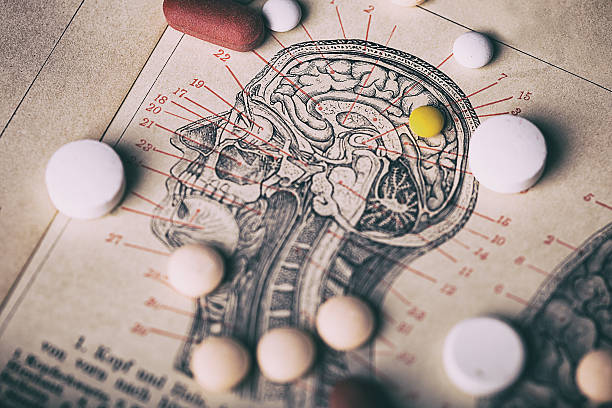Navigating the Maze of Migraine Treatment: A Comprehensive Guide

Migraines, characterized by intense headaches often accompanied by nausea, sensitivity to light and sound, and visual disturbances, affect millions of individuals worldwide, impacting their quality of life and productivity. In this comprehensive guide, we explore the multifaceted landscape of migraine treatment, from conventional pharmaceutical approaches to complementary and alternative therapies, aiming to provide insight and understanding to those seeking relief from this debilitating condition. By delving into the underlying causes of migraines, examining the latest advances in medical research, and exploring holistic approaches to migraine management, we aim to empower individuals with the knowledge and tools they need to effectively navigate the maze of migraine treatment and reclaim control over their lives.
Before diving into the realm of migraine treatment, it&8217;s essential to understand the complexities of this neurological disorder. Migraines are believed to be caused by a combination of genetic, environmental, and lifestyle factors, with changes in brain chemistry and blood flow playing a central role in their onset and progression. Triggers such as stress, hormonal fluctuations, certain foods, and environmental factors can precipitate migraine attacks in susceptible individuals, leading to the characteristic symptoms that can last for hours or even days. By unraveling the mystery of migraines and identifying individual triggers and patterns, individuals can take proactive steps to manage their condition and reduce the frequency and severity of migraine attacks.
Conventional Treatment Approaches: Pharmaceutical Solutions and Beyond
Conventional treatment options for migraines typically focus on relieving symptoms during an acute attack and preventing future episodes from occurring. Nonsteroidal anti-inflammatory drugs (NSAIDs), such as ibuprofen and aspirin, are commonly used to alleviate pain and inflammation associated with migraines, while prescription medications such as triptans and ergotamines target specific neurotransmitters involved in the migraine process to abort attacks and reduce symptom severity. Additionally, preventive medications such as beta-blockers, antidepressants, and anticonvulsants may be prescribed for individuals who experience frequent or debilitating migraines. While pharmaceutical interventions can be effective for many migraine sufferers, they may also be associated with side effects and limitations, prompting some individuals to explore complementary and alternative therapies as adjunctive or standalone treatments for migraine management.
Complementary and Alternative Therapies: Exploring Holistic Approaches to Migraine Relief
In recent years, interest in complementary and alternative therapies for migraine treatment has surged, driven by a growing recognition of the limitations and side effects of conventional pharmaceutical approaches. From acupuncture and chiropractic care to herbal supplements and mind-body techniques, a wide range of holistic modalities are being explored as potential adjuncts to traditional migraine treatment. Acupuncture, for example, has been shown to stimulate the release of endorphins and modulate pain perception, leading to reductions in migraine frequency and severity in some individuals. Similarly, chiropractic adjustments may help alleviate tension and improve spinal alignment, thereby reducing migraine triggers and promoting overall well-being. Mind-body practices such as yoga, meditation, and biofeedback offer additional avenues for stress reduction and relaxation, which are known triggers for migraine attacks in many individuals. By embracing a holistic approach to migraine management that integrates conventional and complementary therapies, individuals can cultivate resilience, enhance self-care, and optimize their overall health and well-being.
Lifestyle Modifications: Navigating Triggers and Promoting Wellness
In addition to medical interventions and complementary therapies, lifestyle modifications play a crucial role in migraine treatment and prevention. Identifying and avoiding triggers such as certain foods, environmental factors, and stressors can help reduce the frequency and severity of migraine attacks. Keeping a migraine diary or journal can be a valuable tool for tracking triggers and patterns over time, enabling individuals to make informed decisions about their lifestyle choices and habits. Incorporating regular exercise, adequate sleep, and stress management techniques into daily routines can also promote overall wellness and resilience, reducing the likelihood of migraine triggers and enhancing the body&8217;s ability to cope with stress and inflammation. By adopting a proactive approach to lifestyle modification and self-care, individuals can empower themselves to take control of their migraines and live life to the fullest.
Emerging Therapies and Future Directions: Innovations in Migraine Treatment
As our understanding of migraines continues to evolve, so too do the treatment options available to individuals seeking relief from this debilitating condition. Emerging therapies such as monoclonal antibodies targeting calcitonin gene-related peptide (CGRP), a key mediator of migraine pain, offer new hope for individuals who have not responded to traditional treatments or who experience significant side effects. Additionally, neuromodulation devices, which deliver targeted electrical or magnetic stimulation to the brain or nerves involved in the migraine process, are showing promise as noninvasive alternatives to pharmaceutical interventions. With ongoing research and innovation in the field of migraine treatment, the future holds great promise for individuals seeking relief from this complex and challenging condition.
Conclusion: Empowering Individuals on Their Migraine Treatment Journey
In conclusion, navigating the maze of migraine treatment requires a multifaceted approach that addresses the underlying causes of migraines, alleviates symptoms during acute attacks, and promotes overall well-being and resilience. By understanding the complexities of migraines, exploring conventional and complementary treatment options, and embracing lifestyle modifications and emerging therapies, individuals can empower themselves to take control.
